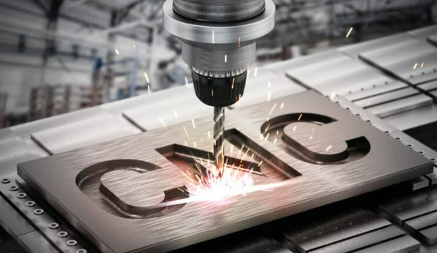
CNC Machining Steel: A Comprehensive Guide
Introduction
CNC (Computer Numerical Control) machining is a precise and versatile manufacturing process used to create intricate and high-quality parts from various materials, including steel. CNC machining steel is particularly popular in industries that require robust, durable, and high-performance components, such as aerospace, automotive, and industrial machinery. This article delves into the intricacies of CNC machining steel exploring the process, benefits, challenges, applications, and future trends.
What is CNC Machining?
CNC machining is a subtractive manufacturing process that uses computerized controls to operate and manipulate machine tools. These tools, including lathes, mills, routers, and grinders, remove material from a workpiece to shape it into the desired form. The process is highly automated and precise, allowing for the production of complex parts with tight tolerances.
How CNC Machining Works
- Design and Programming
- CAD Design: The process begins with creating a detailed 3D model of the part using Computer-Aided Design (CAD) software. This model serves as a blueprint for the machining process.
- CAM Programming: The CAD model is then imported into Computer-Aided Manufacturing (CAM) software, which generates the toolpaths and machining instructions. These instructions are translated into G-code, the programming language used by CNC machines.
- Machine Setup
- Material Selection: The appropriate type of steel is selected based on the part’s requirements. Different grades of steel offer varying properties, such as hardness, strength, and machinability.
- Tool Selection: The tools needed for the machining process, such as end mills, drills, and turning tools, are chosen based on the material and the desired features of the part.
- Machining Process
- Loading the Material: The steel workpiece is securely loaded into the CNC machine’s workholding device, such as a vise, chuck, or fixture.
- Executing the Program: The CNC machine follows the programmed instructions to perform a series of cutting operations, removing material from the workpiece to create the final part. These operations can include milling, turning, drilling, and grinding.
- Inspection and Finishing
- Quality Control: After machining, the part undergoes inspection to ensure it meets the specified dimensions and tolerances. Measurement tools like calipers, micrometers, and coordinate measuring machines (CMM) are used for this purpose.
- Finishing Operations: Depending on the part’s requirements, additional finishing operations such as deburring, polishing, heat treatment, and coating may be performed.
Advantages of CNC Machining Steel
Precision and Accuracy
CNC machining offers exceptional precision and accuracy, allowing for the production of parts with tight tolerances and intricate details. This level of precision is critical in industries such as aerospace and medical devices, where even minor deviations can impact performance and safety.
Read also: Mastering Risk Adjustment Strategies & Technologies to Optimize Reimbursement
Material Versatility
Steel is available in various grades, each with unique properties that make it suitable for different applications. CNC machining can accommodate a wide range of steel types, including carbon steel, stainless steel, tool steel, and alloy steel, providing manufacturers with flexibility in material selection.
Efficiency and Repeatability
CNC machining is highly efficient and capable of producing large quantities of parts with consistent quality. Once the machine is programmed, it can run continuously, producing identical parts with minimal variation. This repeatability is essential for high-volume production and ensures uniformity across batches.
Complex Geometries
CNC machines can produce complex geometries and intricate features that would be challenging or impossible to achieve with manual machining. The ability to create detailed and precise parts opens up new possibilities for design and innovation.
Cost-Effectiveness
While the initial investment in CNC machinery and programming can be high, the long-term cost savings are significant. CNC machining reduces labor costs, minimizes material waste, and increases production speed, leading to lower overall manufacturing costs.
Challenges of CNC Machining Steel
Tool Wear
Machining steel, especially harder grades, can lead to significant tool wear. The hardness and abrasiveness of steel can quickly dull cutting tools, requiring frequent replacement or re-sharpening. Using high-quality, coated, or carbide tools can mitigate this issue, but it still represents an ongoing challenge.
Material Hardness
The hardness of steel can pose difficulties in machining, particularly for high-strength alloys. Cutting harder materials requires more force and can generate excessive heat, leading to potential issues such as thermal distortion or tool breakage. Proper tool selection, cutting parameters, and coolant application are crucial to managing these challenges.
Machining Complexity
CNC machining complex steel parts with intricate geometries requires advanced programming skills and sophisticated machinery. The complexity of the machining process can increase the risk of errors, necessitating careful planning, simulation, and verification to ensure successful production.
Surface Finish
Achieving a high-quality surface finish on machined steel parts can be challenging due to factors such as tool marks, material hardness, and cutting parameters. Post-machining finishing processes, such as grinding, polishing, or coating, are often necessary to achieve the desired surface quality.
Applications of CNC Machining Steel
Aerospace
In the aerospace industry, CNC machining steel is used to manufacture critical components such as engine parts, landing gear, and structural elements. The high strength and durability of steel make it ideal for withstanding the extreme conditions and stresses encountered in aerospace applications.
Automotive
CNC machining steel is widely employed in the automotive industry to produce parts such as engine blocks, transmission components, suspension parts, and chassis elements. The precision and repeatability of CNC machining ensure consistent quality and performance in mass-produced automotive parts.
Medical Devices
The medical device industry relies on CNC machining to create intricate and high-precision components from stainless steel and other biocompatible alloys. Parts such as surgical instruments, implants, and diagnostic equipment benefit from the accuracy and reliability of CNC machining.
Industrial Machinery
CNC machining steel is essential in the production of industrial machinery and equipment, including gears, shafts, bearings, and hydraulic components. The robustness and wear resistance of steel ensure the longevity and reliability of these critical machine parts.
Tool and Die Making
The tool and die industry extensively uses CNC machining to create molds, dies, and tooling components from tool steel and other high-strength alloys. The precision and hardness of these parts are crucial for manufacturing processes such as injection molding, stamping, and forging.
Future Trends in CNC Machining Steel
Advanced Materials
The development of new steel alloys with enhanced properties, such as higher strength, improved machinability, and increased corrosion resistance, is driving innovation in CNC machining. These advanced materials enable the production of more durable and high-performance parts.
Automation and AI
The integration of automation and artificial intelligence (AI) in CNC machining is revolutionizing the manufacturing industry. Automated tool changers, robotic handling systems, and AI-driven process optimization are enhancing efficiency, reducing downtime, and improving overall productivity.
Additive Manufacturing Integration
The combination of CNC machining and additive manufacturing (3D printing) is creating new possibilities for hybrid manufacturing. Additive processes can build up complex geometries, which are then finished with CNC machining to achieve precise dimensions and surface finishes.
Smart Machining
The adoption of Industry 4.0 technologies, such as the Internet of Things (IoT) and data analytics, is enabling smart machining. Real-time monitoring, predictive maintenance, and data-driven process improvements are enhancing the reliability and efficiency of CNC machining operations.
Sustainable Practices
Sustainability is becoming a key focus in manufacturing, including CNC machining. Efforts to reduce material waste, optimize energy consumption, and implement eco-friendly practices are driving the development of more sustainable machining processes.
Conclusion
CNC machining steel is a cornerstone of modern manufacturing, offering unparalleled precision, efficiency, and versatility. By understanding the CNC machining process, its advantages, challenges, and applications, manufacturers can make informed decisions to leverage this technology effectively.
The continuous advancements in materials, automation, and digital integration are pushing the boundaries of what CNC machining can achieve. As the industry evolves, CNC machining steel will remain a critical enabler of innovation and excellence in manufacturing, driving progress across diverse sectors and applications.






